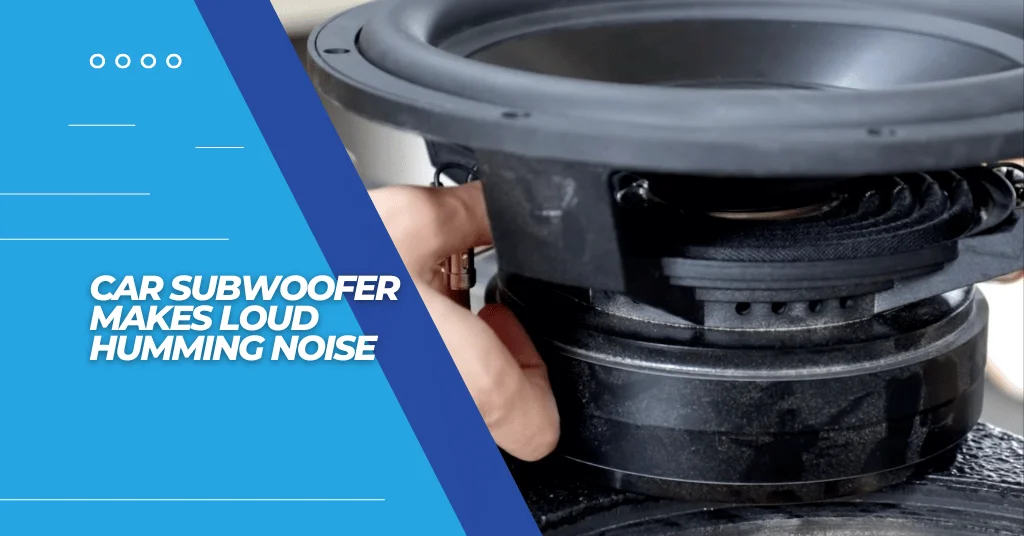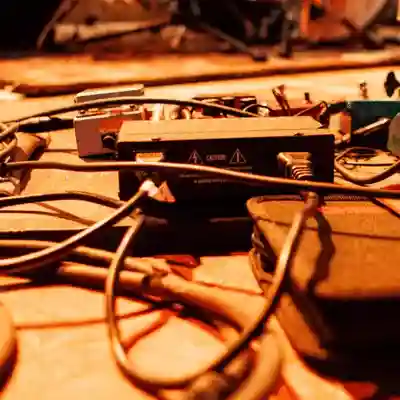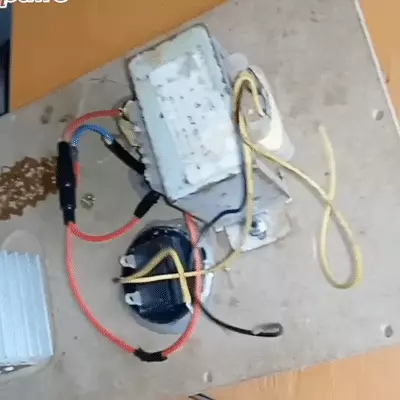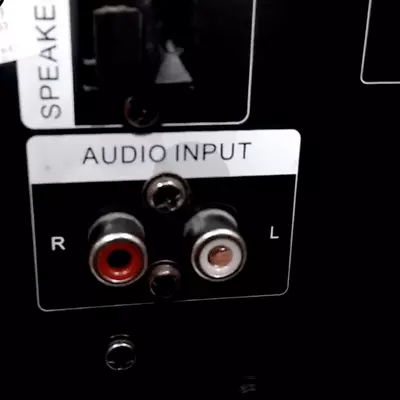Car Subwoofer Makes Loud Humming Noise

Every audiophile wants high-end bass in their cars. That’s why we use subwoofers. Car subwoofers can produce a low-frequency sound that we can feel with a thumping sound.
However, it’s not a big deal that sometimes subwoofer hum (Loud or weaker), distortion, or vibration (especially when the car is off) all of a sudden.
You don’t need to panic if you are getting loud buzzing noise from the car sub. As an audio expert, I will share the reasons behind this buzzing noise and its solutions.
Let’s dive in!
Why Does Your Car Sub Produce Loud Humming? – 5 Top Reasons
First, we need to learn what causes the problem to prevent subwoofer hum. Therefore, I’ve shared the top reasons below so that you can quickly check out the problem:
1. Poor Ground Wire Connection:

Poorly connected ground wires (ground loop) can lead to subwoofer hum or buzzing noises from a car sub. This noise is caused by the electrical current running through the subwoofer’s voice coil.
If the ground wire is not firmly attached, the movement of electricity is hampered, and vibrations develop within the speaker cone, resulting in undesirable humming sounds.
To prevent this, it is essential to ensure that the ground wire is properly attached and secured at all times. Here’s the deal, the more solid the ground wire, the more reliable the sound.
2. Torn or Damaged Cone:

After ensuring the proper ground wire connection, if you still hear the subwoofer hum, it’s time to check if the subwoofer has torn or damaged cone.
You will notice the vibrations that don’t correspond with the electrical signal when there is a faulty cone. This results in a loud noise that may intensify as the volume increases.
In addition, if a tear or hole is present in the cone, air can be drawn into it, creating a continuous buzzing sound.
3. Electrical Interference of Wires:

Another top reason not everyone knows is they keep RCA cables & power wires very close. When car audio wires are not properly insulated or routed away from other power-carrying lines, electrical noise can travel through the system and interfere with the sound output. This interference will manifest as a humming or buzzing noise from the speaker.
4. Faulty Power Supply:

You will also hear the buzzing noise when your amplifier doesn’t filter the power. When an amplifier does not have a proper filter, it can allow DC (direct current) voltage to pass through to your speakers. This DC voltage creates a low-frequency hum you hear from your car’s subwoofer.
The buzz you hear depends on how much DC voltage the amplifier allows to pass through, with more significant amounts of DC voltage resulting in louder hums.
5. AUX Input Acting Like an Antenna:

Some people ignore that AUX input can act like an antenna (1), resulting in an unpleasant humming sound. The AUX input in your car acts as an antenna and picks up electrical signals from the environment, such as cell phone towers and other electronic devices.
These signals buzz or hum when they come into contact with your car’s subwoofer speaker.
How to Eliminate Car Subwoofer Loud Humming?
Now that we know all the reasons responsible for such unpleasant experiences, it will be easy to eliminate the subwoofer hum. Follow the fixations below:
Make a Proper Ground Connection:
If you find out that you are not using the proper ground wire connection (ground loop) in your car sound system, then you can quickly fix the issues by following the below methods:
Grounding a Car Amplifier:
- Use safety gloves and disconnect the power terminals of the car audio system from the battery.
- Locate a metal point on the vehicle’s frame where you can attach the amplifier’s ground wire. This location should be as close to the amplifier as possible while still being free of paint and debris.
- Ensure the metal surface is clean by scrubbing off any dirt or rust with a wire brush.
- Attach the ground wire to the frame using a self-tapping screw or a ring terminal. Ensure the connection is tight and secure to effectively transfer power from the amplifier to the car’s electrical system.
- Finally, connect one end of a gauge wire to the amplifier’s negative terminal or ground input (if available) and the other to the ground point on your vehicle’s frame. This wire should be long enough to reach both components and short enough so that it is not exposed to any moving parts.
Grounding a Car’s Head Unit:
You must ground the car factory unit properly if you don’t have an external amplifier. Steps to follow:
- As discussed above, wear safety gloves and disconnect the power terminals to your car stereo.
- Find an appropriate metal point under your car’s dashboard near the factory unit.
- Ensure you clean the metal point, so it doesn’t contain dust or paint.
- Cut one end of the ground wire long enough to quickly wrap its exposed area to the RCA cables inputs of your car’s head unit and make the connection.
- Finally, attach the other end of the ground cable to the exposed metal area. Ensure that you don’t use a long wire.
Replace Torn or Damaged Cone:
If the cone is to blame for the subwoofer hum, you must replace it properly. I will suggest you seek professional help. However, follow the below steps to replace the torn or damaged cone:
- Unplug the speaker from the power source and disconnect any cables or wires connected to it.
- Carefully remove the screws securing the panel that covers the cone using a screwdriver.
- Gently pull out the torn or damaged cone from its place in the speaker body, taking care not to cause any other damage.
- Place the new cone in the same position and secure it with a few drops of glue if necessary.
- Replace the panel, making sure to screw it back securely in place.
- Plug in the power source and cables or wires to complete the connection.
- Turn on your speaker to check if the noise has been eliminated.
- If not, consider consulting a professional to diagnose and repair the issue with your speaker.
Separate Wires That Are Causing the Electrical Interference:
As discussed above, the most common cause of wire interference is the speaker wires being too close or touching each other. Check this by looking for any loose or frayed wires near the speakers.
If you find any, use electrical tape to insulate them and minimize the chances of cross-interference. Next, ensure your power cable – known as a ‘hot’ wire – is kept separate from the audio wiring.
This is because the power wire runs on an alternating current and can cause interference with the audio cables if they are too close. To reduce this interference, keep your power wire away from any other wiring in the system.
You can also use shielded cables (Which can help prevent ground loops). These audio cables have an extra layer of protection that prevents interference from being transferred. They are also better at blocking external sources of interference, such as radio stations and cell phones.
Fix the Power Supply:
If the amplifier is not filtering the power correctly, you can fix it by following the steps:
- Unplug the amplifier from the car sound system.
- Remove any covers or panels to access the internal components of the amplifier.
- Locate the power filter section of the amplifier; a diode bridge, capacitors, and inductors near the input connection for your audio source usually represent this.
- Inspect the capacitors to ensure they are securely connected and check for any visible signs of damage or corrosion.
- If any of these components appear faulty, replace them with new components of the exact specifications as the originals.
- Reassemble the amplifier, ensuring all connections are secure before plugging it back.
- Test the amplifier to check that the humming sound has been eliminated.
- If the issue persists, consider consulting a professional for further assistance in repairing your amplifier.
Fix Input Acting Like an Antenna:
You can quickly fix the problem by making the proper audio connections. However, you can follow below steps:
- Disconnect all the cables connected to your head unit and reconnect them one by one.
- If that doesn’t solve the issue, check if there are other devices close to your head unit (e.g., cell phone chargers) that could be causing interference. If so, try moving them further away from the head unit.
General FAQs
How Do I Stop My Car Subwoofer From Humming?
You can quickly stop the subwoofer hum or buzzing sound by ensuring all connections are secure and properly connected, replacing the defect or malfunctioning components of the amplifier, and ensuring your external power supply is providing the correct voltage to your subwoofer.
You can also try installing a noise filter between your power source and your subwoofer to reduce interference from other electrical components.
Why Is My Sub Making a Humming Noise?
Several factors could cause the humming sound coming from your subwoofer. It may indicate that the power supply is failing, the speaker has a problem, or improper ground wire connection (ground loop). If you’re experiencing this issue, it’s essential to identify and resolve it as soon as possible to avoid further damage to your system.
What Does a Blown Out Subwoofer Sound Like?
When a subwoofer is blown out, it may have some distortions or a muffled sound. It will often result in the bass not having clarity and sounding dull or flat. Depending on the severity of the damage, you may also experience a rattling from the cone or buzzing from the voice coil. However, clicking the link can further check how the blown subwoofer sounds.

The 60 hz loud hum comes and goes on my boat. I have a separate amplifier from the head unit. The left channel speakers and sub cables run side by side to the rear of the boat. I’ve tried reversing polarity on the sub to no effect. Have not tried to run wires apart as I would have to take down ceiling panels in the boat cabin. Would shielded cables help? The amplifier is not grounded separately from the head unit. Subwoofer-JL Audio 10 inch free air, amplifier-Thor Hifonics 50w rms X 4 channels and 150wRMS subwoofer connected to a Kenwood head unit. 4 Kicker 6.5 inch co-ax. Driving me crazy when the hum kicks in, about 25% of the time. What would make it intermittent? Does not matter if I have the boat plugged into shore power-120v AC or running on the water-12V DC. Still intermittent.
There are several factors that could contribute to this issue. Here are a few suggestions to help troubleshoot and resolve the problem:
Separate the cables: Since the left channel speakers and subwoofer cables run side by side, it’s possible that they are picking up interference from each other. Try separating these cables as much as possible to minimize the chances of cross-talk and interference.
Check grounding: Ensure that both the amplifier and the head unit are properly grounded. A poor ground connection can introduce electrical noise into the audio system. Make sure the ground connections are secure and free from any corrosion.
Use shielded cables: Shielded cables can help reduce electromagnetic interference (EMI) from external sources. Consider replacing your current cables with shielded ones to minimize the chances of picking up unwanted noise.
Test different connections: To identify the source of the issue, you can try connecting different combinations of speakers and devices to see if the problem persists. This can help isolate whether the issue is with a specific component or the overall system configuration.
Check power sources: Since you mentioned that the issue occurs both when the boat is running on 12V DC and plugged into shore power at 120V AC, it’s unlikely that the power source is causing the problem. However, it’s still worth ensuring that the power connections are secure and free from any potential issues.